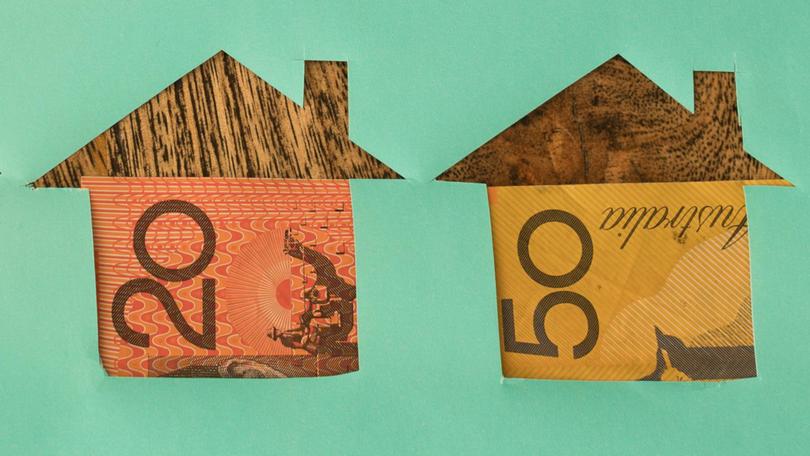Nick Bruining: The ABCs of capital gains tax and the hacks you need to know to soften the blow

This might have been the year you finally made money on that 3x1 in Baldivis you’ve had for the past 10 years, or maybe you cashed out on the back of the surprising lift in Bitcoin?
Either way, you could be staring at a hefty tax bill. Fortunately, with seven weeks to go in the financial year, there’s still time to reduce your taxable income and, in turn, minimise the taxman’s invoice.
Firstly, let’s clear up confusion over how capital gains tax is calculated.
Sign up to The Nightly's newsletters.
Get the first look at the digital newspaper, curated daily stories and breaking headlines delivered to your inbox.
By continuing you agree to our Terms and Privacy Policy.While the system changed in 1999, the most effective method to use is usually the “discount method”.
This is where you deduct the total purchase price of the asset from the sale price and then divide that gross profit figure by two — giving you a “50 per cent discount”. This figure is added to all the other assessable income you received for the year and that then determines your income for tax purposes.
That means there’s no special “capital gains tax rate”. It’s all about your total income from all sources.
Under capital gains tax rules, the purchase price includes all of the transaction costs associated with the purchase, including stamp duty and settlement costs. If you’ve made capital improvements while owning the asset, that can be added to the purchase price and the grand total becomes your “cost base”.
On the down-side, if you have claimed depreciation along the way, there’s a good chance your taxable income could be boosted by the amount between the sale price and the written-down value of the depreciated assets. Your accountant will be able to explain this to you, but it forms part of the money that’s taxed.
If you bought and sold the asset within 12 months there’s no 50 per cent discount. The full profit is taxable income.
You can usually reduce the capital gain by applying capital losses. These might be carried over from a previous investment disaster you experienced, or you still have time to offload the loss-making investments that never look like coming good.
In this case, the loss comes off the gross profit, not after you apply the 50 per cent discount. The 50 per cent discount, however, still applies to the amount remaining.
Another common misunderstanding is that the loss must be like-for-like. In other words, a capital gain on a property can only be offset by a capital loss on another property. Fortunately, that’s not how it works. A loss is a loss on anything. It could be a failed cryptocurrency investment being used as a loss against your property gain.
For those who dabble in shares, the loss could be a taxi driver’s share tip which saw your 6¢ shares in some obscure technology company suddenly disappear from the ASX boards.
In order to write off the investment as a loss, you must “realise” the loss. If the company has gone completely belly up and been liquidated, that’s good enough for the taxman. Plan B is to dispose of your shares when you can.
Sometimes a failed company can hang around like a zombie. Not quite dead — in that it’s no longer trading on the ASX — but there’s still a shell out there, albeit worthless.
A company called delisted.com.au runs a service where, firstly, you can find out what’s happened to your inactive company.
Secondly, for a fee of $151 per company, it will buy your rubbish shares off you for $1. That crystallises the loss for tax purposes. Hopefully, that fee will be less than the tax you would otherwise be forced to pay.
Once you have exploited all of the tricks available to reduce your capitals gains-assessable income, you’ll then be looking for tax deductions.
By far the easiest and most popular solution is to dump a pile of money into superannuation. That could be as much as $132,500
You’ll still need to satisfy the tax-deductible concessional contribution cap limits and other rules, but depending on your account balance this could swallow up a large chunk of your capital gains.
Pretty much anyone aged under 67 has an annual cap limit of $27,500, which includes the compulsory employer super contribution of 11 per cent on ordinary time earnings. If you are aged between 67 and 75, you’ll need to satisfy the work test of 40 hours of paid employment in a consecutive 30-day period.
If your total super balance was less than $500,000 on June 30, 2023 you can make-use of the carry-forward rules. These allow you to apply the unused amounts for up to five previous years. For the 2023-2024 tax year, that could be as much as $132,500 less any concessional amounts already paid in. The number comes from two years where the annual limit was $25,000, plus three years at the current $27,500 cap.
While that amount will be subject to a contributions tax of 15 per cent, if your total adjusted taxable income for the year hits $250,000, the contributions tax will double to 30 per cent. Adjusted income adds back investment income losses (negative gearing losses), reportable fringe benefits and any voluntary concessional contributions to super.
Nick Bruining is an independent financial adviser and a member of the Certified Independent Financial Advisers Association
Originally published as Nick Bruining: The ABCs of capital gains tax and the hacks you need to know to soften the blow

